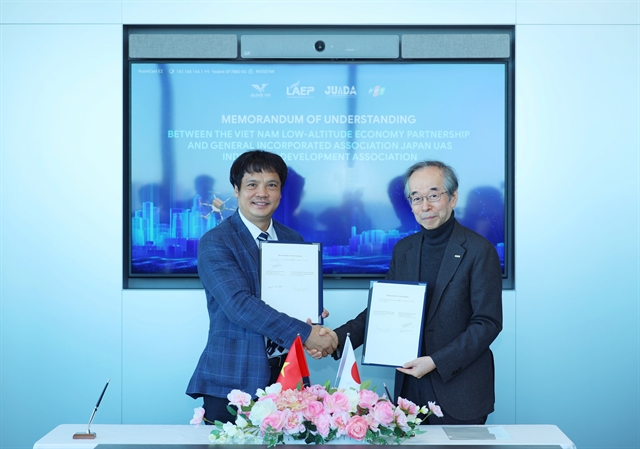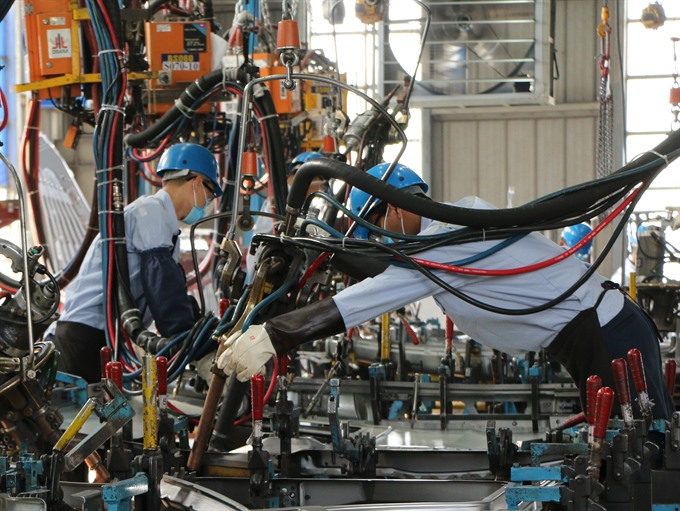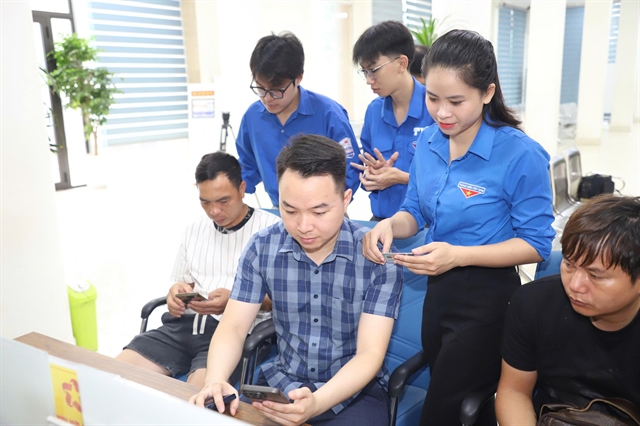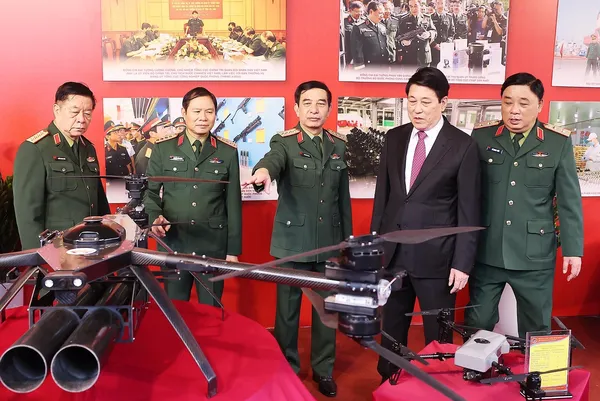 bizhub
bizhub

Việt Nam imported 19,000 cars in the first quarter of this year, a year-on-year increase of 169 per cent in volume and 82 per cent in value, according to a report from the General Statistics Office (GSO).
 |
| Vietnamese automobile workers. — VNS Photo Đoàn Tùng |
HÀ NỘI — Việt Nam imported 19,000 cars in the first quarter of this year, a year-on-year increase of 169 per cent in volume and 82 per cent in value, according to a report from the General Statistics Office (GSO).
The office said the number of imported cars notably increased in the first half of March. More than 4,800 units with nine seats or less were shipped to Việt Nam during this period at an average price of VNĐ189 million each, excluding taxes such as import tax, special consumption tax and value-addedd tax. Of these, nearly 3,000 units were from India.
This trend has been witnessed since last year when the auto market was affected by the impact of the ASEAN Trade in Goods Agreement (ATIGA), according to which import tax on complete built-up units (CBU) was reduced from 40 per cent to 30 per cent, which will eventually become zero per cent by 2018.
Deputy director of the Export and Import Department of the Ministry of Industry and Trade Trần Thanh Hải said Việt Nam committed to cutting and reducing import tax under the ATIGA and the ASEAN-China Free Trade Area (ACFTA), according to which import tax of CBUs from ASEAN to China and vice versa will be down to 50 per cent by 2020.
Within the ASEAN bloc, Hải said nations such as Thailand and Indonesia were performing well in the automobile industry and were a significant challenge for Vietnamese automakers.
The automobile market would possibly break out during the 2020-2025 period when domestic consumption accelerates. If local automakers failed to meet the demand, they would have to import cars and have no opportunity to join the global value chain. Moreover, it was time for foreign auto firms to shift their factories from Europe and America to Asia.
Việt Nam was also at risk of falling into the same situation as the Philippines where the market was underdeveloped with unclear policies, due to which automakers had withdrawn from the domestic market and instead started importing vehicles, Hải told thoibaokinhdoanh.vn.
“The import of vehicles and parts will possibly increase in the coming years,” Hải said.
The selling price of cars in the Vietnamese market currently includes taxes such as import tax, special consumption tax, which is based on engine displacement, and value-added tax (VAT). In 2018, when import tax reduces to zero per cent within ASEAN, there will only be special consumption tax and VAT. If the government continues applying its current taxes and fees, the price is believed to go down in the future.
Phạm Anh Tuấn, head of the Vietnam Automobile Manufacturers’ Association (VAMA)’s Policy Subcommittee, told Việt Nam News that the prices of vehicles would be based on competition in the market and relevant tax policies.
“When the import tax becomes zero per cent, the price of imported vehicles from ASEAN countries will sharply decrease. Local automakers will be under pressure to cut prices if they want to continue competing in the market, in addition to facing several difficulties maintaining production and business after 2018,” Tuấn said.
According to Tuấn, average localisation rate of VAMA members is still low at some 40-50 per cent. This has resulted in a small volume of vehicles being produced and assembled in Việt Nam, which is only 10-20 per cent of other countries in the region. Besides this, the underdeveloped support industry has also resulted in local automakers failing to optimise their production process and localisation rate.
Within the current context, the increase in localisation rate is an important factor for local automakers to develop their production but still meet people’s demand for inexpensive cars.
It is a good sign for the industry that several local auto projects are executed this week. These include the second Mazda plant being jointly built by local giant automaker Trường Hải Automobile Company (Thaco) and Japanese car producer Mazda in central Quảng Nam Province and a joint project on expanding production and assembling Hyundai passenger cars being implemented by Thành Công Group and its South Korean partner Hyundai Motor Group.
Both projects, which aim at meeting local increasing demand and exports, are expected to provide momentum to motivate other local automakers to increase localisation rate and supply quality products but at reasonable prices in the Vietnamese market. — VNS
Govt forms inter-sector team to help auto industry
The Ministry of Industry and Trade and other ministries will form an inter-sector team that will help prepare local automakers to face the impact of zero import tax on ASEAN automobiles.
From January 1, 2018, automobiles being imported into Việt Nam from the ASEAN region will not have to pay import tax.
The decision to help the country’s auto sector by setting up a special working team was taken on Monday at a regular government meeting held by Prime Minister Nguyễn Xuân Phúc.
The team will include representatives from transport, finance and science and technology ministries and other agencies, who will study to understand how local automakers and importers function to ensure that this is compatible with the World Trade Organisation regulations and all free trade agreements that Việt Nam has committed to, especially those relevant to the auto sector.
Deputy Minister of Industry and Trade Đỗ Thắng Hải said the team must suggest ways to maintain, boost and support Vietnamese businesses to manufacture, assemble and import, at the same time ensuring that they are aligned to consumer interests. The team will submit a proposal to the Prime Minister on the most suitable methods before May 1, Hải said. — VNS




